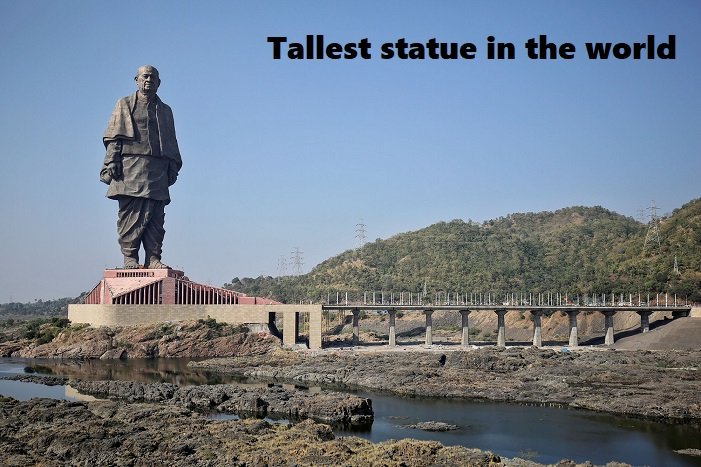Discover the World’s Tallest Statue: The Majestic Statue of Unity

Standing tall and proud, the Statue of Unity is not just a monumental sculpture but a symbol of unity, resilience, and visionary leadership.
As someone deeply familiar with this awe-inspiring structure, I’m excited to share insights into its history, significance, and the marvel of engineering that brought it to life. Join me on a journey to explore the tallest statue in the world.
The Vision Behind the Statue of Unity
The Statue of Unity, dedicated to Sardar Vallabhbhai Patel, one of India’s most revered leaders, was envisioned as a tribute to his role in unifying the country.
Known as the “Iron Man of India,” Patel’s efforts in integrating the princely states into the Indian Union were pivotal in shaping modern India. The statue serves as a reminder of his unwavering dedication and the values he stood for.
Construction and Design: A Feat of Engineering
Height and Structure: The Statue of Unity stands at an astonishing height of 182 meters (597 feet), making it the tallest statue in the world. To put this into perspective, it is almost twice the height of the Statue of Liberty in the United States.
The statue’s sheer size is a marvel, designed to withstand winds of up to 180 km/h and earthquakes measuring up to 6.5 on the Richter scale.
Location: The statue is strategically located on the Sadhu Bet Island, near the Narmada River in the Indian state of Gujarat. This location was chosen not only for its scenic beauty but also for its historical significance, as it is close to Sardar Patel’s birthplace.
Design and Construction: Renowned sculptor Ram V. Sutar designed the Statue of Unity, capturing the essence of Sardar Patel’s persona. The construction involved a meticulous process of bronze cladding over a steel framework, with over 1,700 tons of bronze used in the outer façade. The project, completed in a record 46 months, stands as a testament to modern engineering prowess.
Visitor Experience: A Journey to Remember
Viewing Gallery: Visitors can take an elevator ride to the viewing gallery located at a height of 153 meters. From here, they can enjoy breathtaking panoramic views of the Narmada River, the surrounding hills, and the Sardar Sarovar Dam. The gallery offers an unparalleled vantage point to appreciate the scale and beauty of the statue.
Exhibition Hall: At the base of the statue, an exhibition hall provides an in-depth look at Sardar Patel’s life, his contributions to India, and the history of the statue’s construction. Interactive displays and informative exhibits make this a must-visit for history enthusiasts and curious minds.
Tourist Infrastructure: The Statue of Unity complex is designed to be a comprehensive tourist destination. With well-maintained gardens, a museum, and various amenities, visitors can spend an entire day exploring and enjoying the site. The nearby Valley of Flowers adds to the attraction, offering a colorful and serene backdrop to the majestic statue.
The Symbolism and Impact of the Statue of Unity
The Statue of Unity is more than just a colossal sculpture; it is a symbol of national pride and unity. It represents Sardar Patel’s vision of a united India and serves as an inspiration for future generations.
The statue has also had a significant impact on the local economy, boosting tourism and creating numerous jobs in the region.
Read More:
The Charismatic Charm of Stray Kids’ Felix: A Deep Dive
Conclusion
The Statue of Unity stands as a monumental achievement in both engineering and symbolism. As someone with experience in this topic, I can attest to the awe-inspiring presence of the statue and its significance in honoring Sardar Patel’s legacy.
Whether you are an admirer of monumental architecture or a history enthusiast, a visit to the Statue of Unity is an unforgettable experience, offering a deeper understanding of India’s rich heritage and the remarkable man who played a crucial role in its formation.





